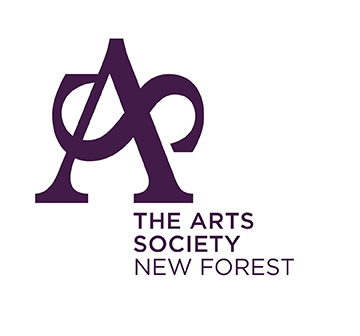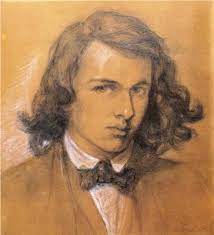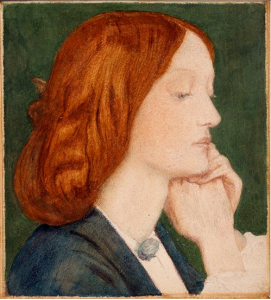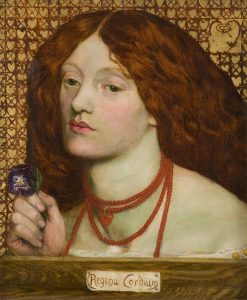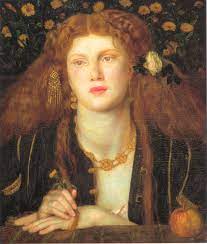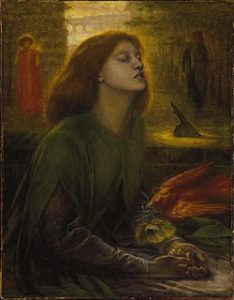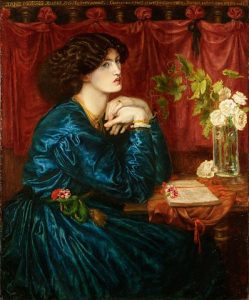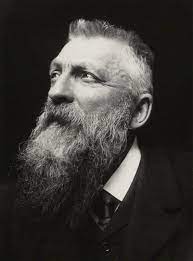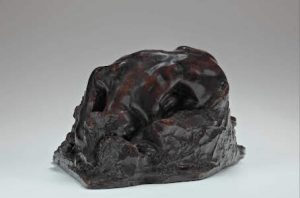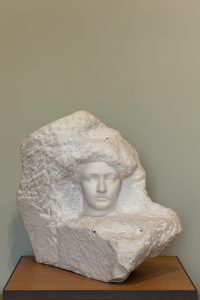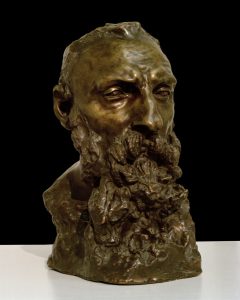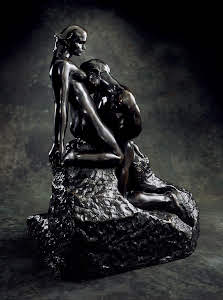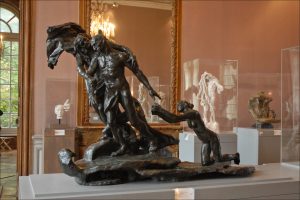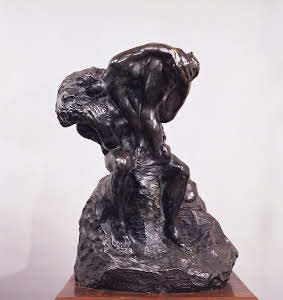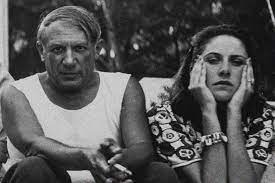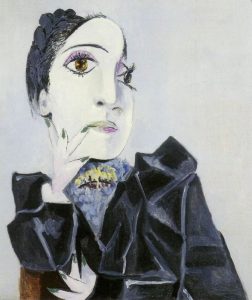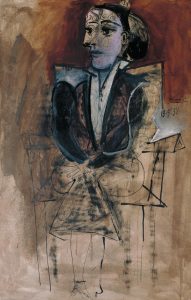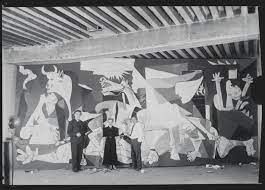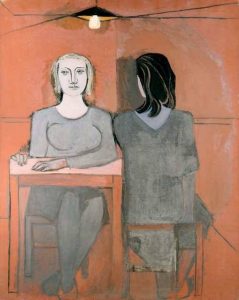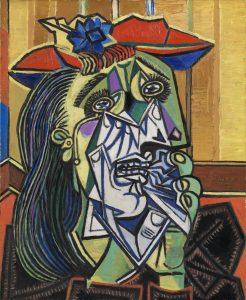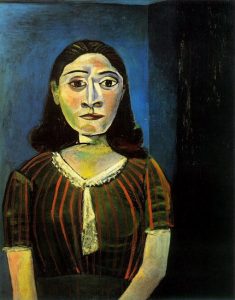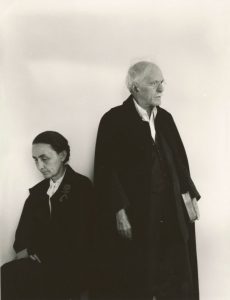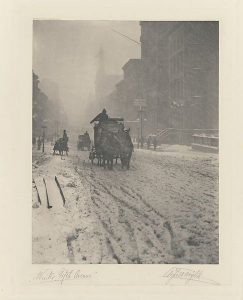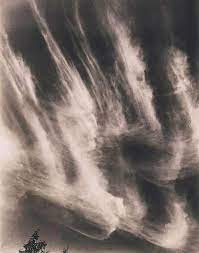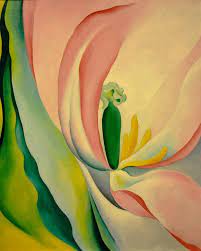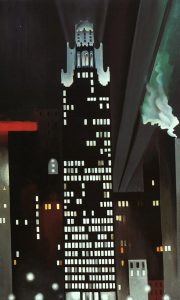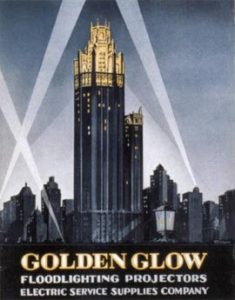Artists and Their Muses – a lecture by Alexandra Epps on October 11th. 2021
“What is a muse ?” asked Alexandra at the beginning of her lecture – the definition she gave was ‘ a person or personified force who is the source of inspiration for an artist. ‘
In the classical world artists took angels as their muses – the kiss of creativity was bestowed on the struggling artist who would reinvest himself again and again.
In the more modern world we start to get an idea of the muse who inspired them.
Alexandra continued by talking of the complex relationships which exist between artists and their muses, and explained that she would be focussing on four of the giants of the art world – giants whose muses were artists in their own right.
She began with
ROSSETTI and SIDDAL
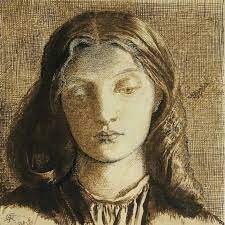 They were founding members of the pre- Raphaelite movement
They were founding members of the pre- Raphaelite movement
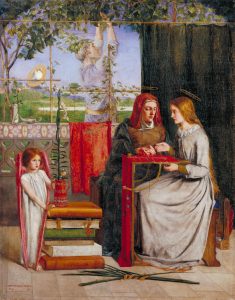
This was the first painting in the pre-Raphaelite movement.
The painting of ‘Ophelia ‘ by Millais in 1851 was the painting which made Siddal famous – it also made her ill as she posed lying in cold water. 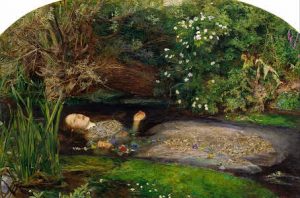
The paintings of Elizabeth Siddall by Rossetti epitomised the pre-Raphaelite view with downcast eyes and a brooding expression.
and Alexandra asked us to compare this with Siddall’s self portrait
 It shows how disconnected Rossetti was with how they really were.
It shows how disconnected Rossetti was with how they really were.
Siddall became increasingly unwell and when Rossetti finally married her , she had to be carried to the church .
‘Regina Cordium’ painted by Rossetti in 1860 was intended to alay all her fears with the hearts etc. but she still looks ill.
Rossetti was still painting his other mistresses and they were looking very sensuous and seductive as in Bocca Baciata painted in 1859
In ‘Beata Beatrix,’ Elizabeth looks so ill and she takes her own life with an overdose of opium. In the picture you can see a red dove giving her a poppy – the source of her death.
However in spite of all this, the face of Jane Morris ( the wife of William Morris) was the face that Rossetti was besotted with – seen here in his painting in 1868 – ‘The Blue Silk Dress’
The next artist and their muse that Alexandra then introduced us to was
RODIN and CLAUDEL
This was a relationship which was the making of Claudel but also it was her destruction. Like other muses they are defined by the mythology that surrounded them.
Rodin’s sculpture ‘The Kiss’ show the story of universal love, although actually it is adultery
Claudel had been brought to Paris by her family because she had shown such promise. She became a student of Rodin and her beauty and skill impressed him immediately. She soon became his model (Rodin like to use inexperienced models)
Danaid by Rodin 1989
Rodin and Claudel had such a strong relationship – they were pushing and challenging each other constantly
‘Aurora’ sculpted in 1885 shows a beautiful face emerging from rough rock
Claudel’s sculpture of Rodin (1888)
‘The Eternal Idol’ by Rodin demonstrates how they were wallowing in eroticism which is in a complete comparison to ‘The Waltz’ which is full of gentle movement .
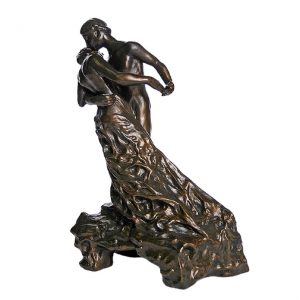 Rodin was living with his partner Rose Mignon but was constantly promising Claudel that he would leave her but he never did. In the end Claudel decided that she must go.
Rodin was living with his partner Rose Mignon but was constantly promising Claudel that he would leave her but he never did. In the end Claudel decided that she must go.
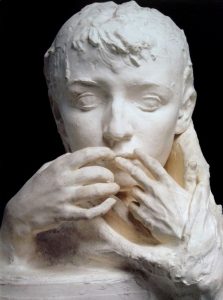 The two sculptures that this created show the eternal triangle with Rodin’s “The Farewell’ in 1898
The two sculptures that this created show the eternal triangle with Rodin’s “The Farewell’ in 1898
and ‘Age of Maturity’ by Claudel in 1899
Claudel became a recluse and her brother organised for her to go into a mental hospital, where she remained for 30 years and never sculpted again.
Rodin’s sculpture ‘The Sculptor and His Muse ‘ sums up the intensity of his feelings. He never got over her and in his will he made it a condition that her work should be exhibited alongside his.
The third artist and muse that alexander introduced us to was
PICASSO and DORA MAAR
Maar was a young French photographer and the relationship between the two changed both their lives..
Dora Maar “with Green Fingernails’
Maar and Picasso met in a cafe and Picasso was watching Maar do performance art by jabbing at her gloved hand with a knife.
Picasso became obsessed with her and says she was everything and in everything – a bird, a dog, an idea …….everything.
Picasso had said that his lovers were a constant source of ‘endless inspiration’ and his painting ‘ Nude, Green leaves and Bust’ 1932 shows another of his lovers, Marie-Therese – his young secret lover.
He would paint both women , sometimes on the same day. Dora became his public lover but she was very highly strung and is seen smiling in only 2 of the paintings.
Dora Maar Seated by Picasso
Dora, for her part, introduced Picasso to many photographic techniques. She photographed the creation of ‘Guernica’
Marie Therese came to the studio and the two ladies had a fight about who was the most important. Picasso’s painting of the situation between his two lovers “The Conversation’ shows only the back view of Maar which could be his view of the two ladies.
He would paint Dora spiky and Marie Therese soft. It was Dora who understood Picasso better than any of his other women.
and for his painting ‘The Weeping Woman ” (1937) he uses Dora as his model
However by 1942 Picasso’s painting of Maar as ‘Woman in a Satin Bodice” clearly shows he was no longer in love with her.
Dora had a nervous breakdown when the relationship was over and though they still exchanged gifts they were unkind unpleasant gifts.
The final pair that Alexandra told us about gave us a more positive and cheerful view of Artists and their muses.
STIEGLITZ and O’KEEFE
Stieglitz was one of the first to elevate photography to a fine art.
‘Winter in Fifth Avenue’ – photograph by Stieglitz
O’Keefe was an artist and Stieglitz used O’Keefe’s work in his exhibition without asking her permission; she was very angry and contacted him and the relationship began from there.
He persuaded her to travel to America although he was married, but he divorced and married O’Keefe.
Though he photographed O’Keefe 350 times he could never see who she really was.
They then both work on the theme of clouds to celebrate their love and subsequent marriage.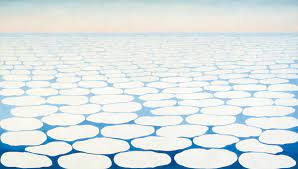
O’Keefe
Steiglitz
‘Pink Tulips’ by O’Keefe seems to have sexual undertones
and ‘Radiator Building’ Stieglitz and by O’Keefe
They often both worked on the same projects.
O’Keefe then moved away to New Mexico as she craved anonymity and didn’t come back, having become famous in her own right. For the rest of their relationship their love was exchanged in letters only.
Alexandra then closed this really interesting lecture with the quote
‘The sky is the limit for where an artist seeks inspiration ” which left us thinking and considering the inspiration for other artists.
